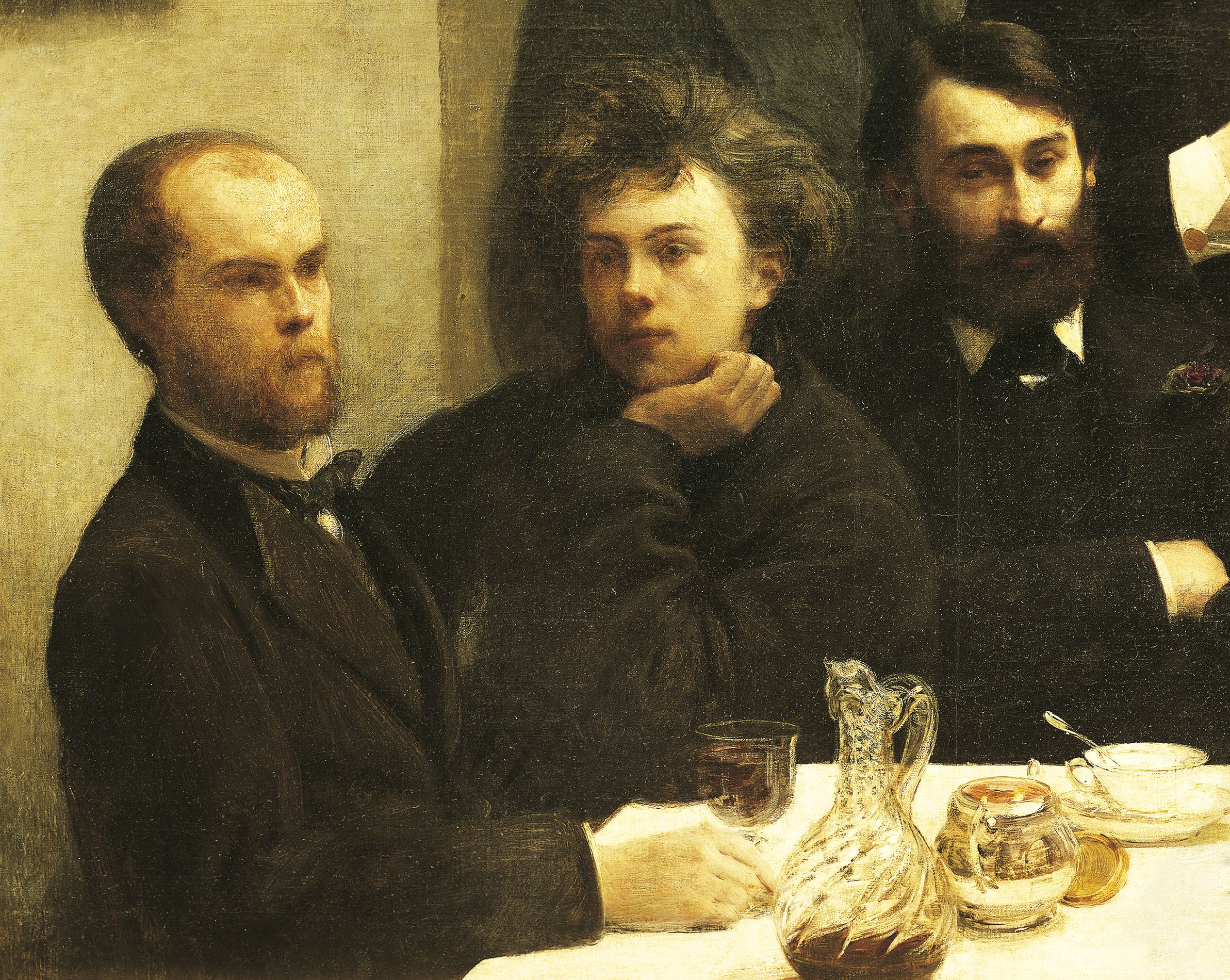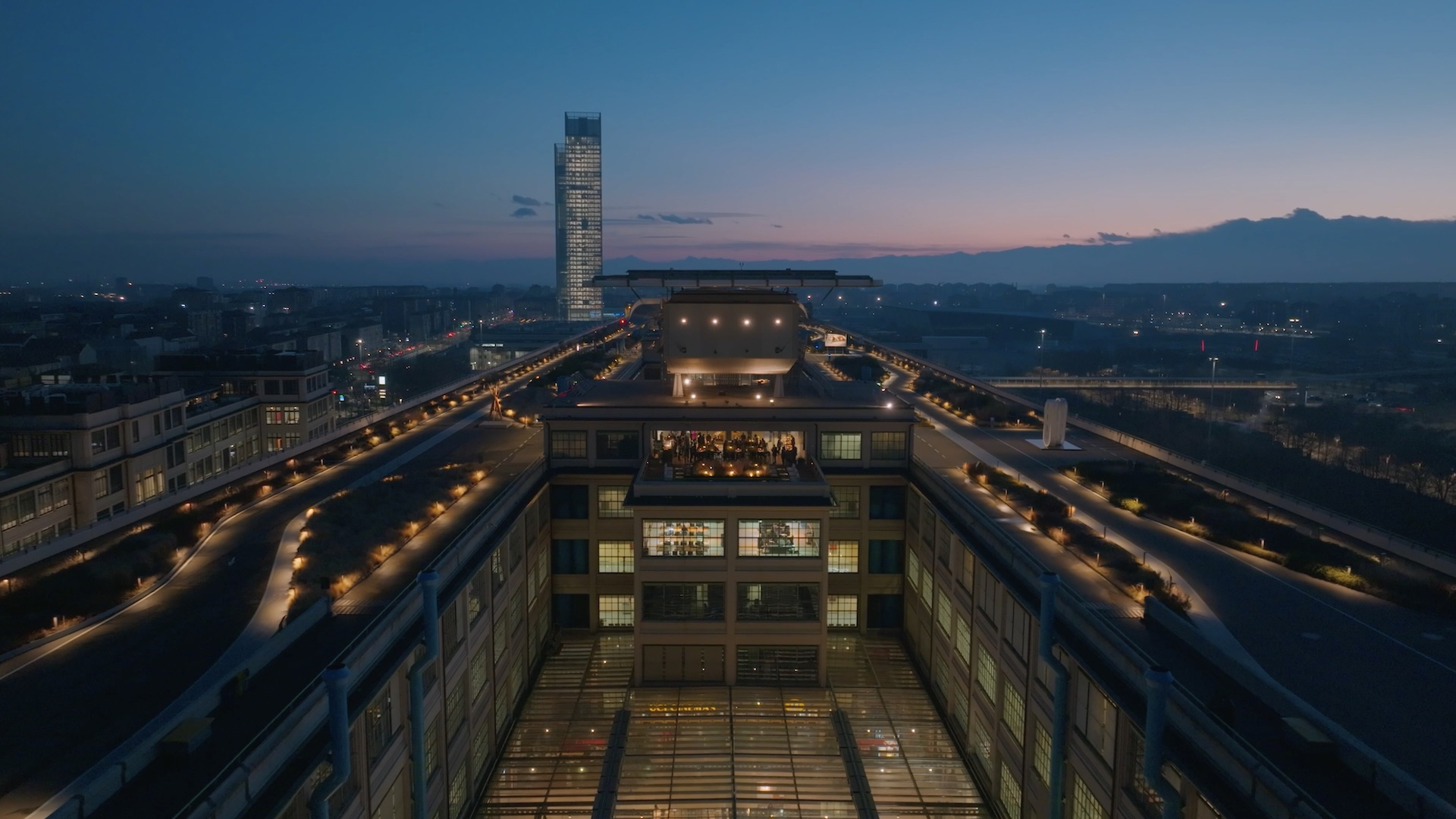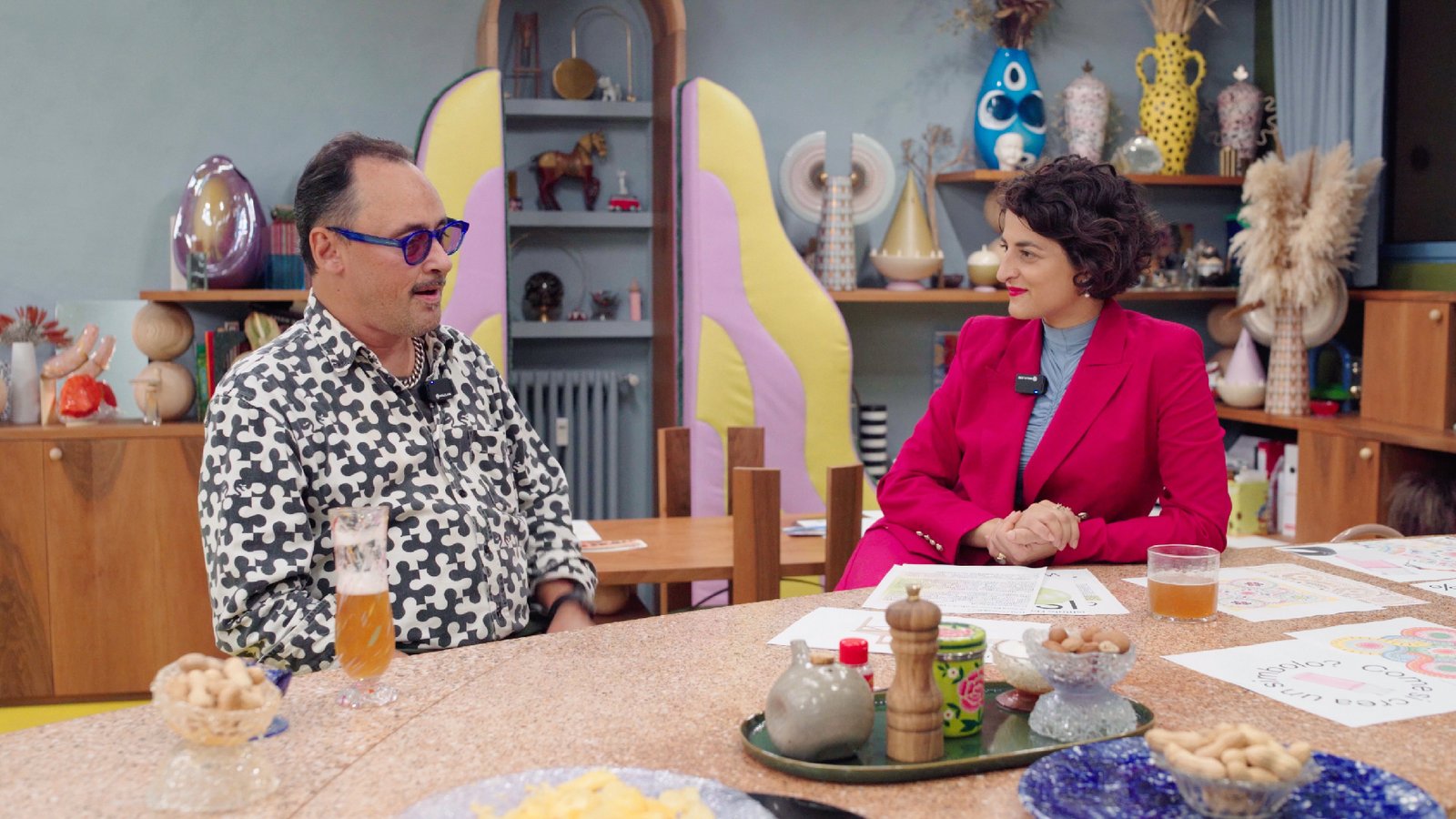
Creativity at the edge of chaos. Art and mental health
Problem XXX.1 of Aristotle's Problemata physica, also known as ‘the problem of melancholy’, opens with a curious question: ‘Why are all those who have become eminent in philosophy, poetry or art clearly melancholic?’ The answer, for Aristotle, lay in the excess of ‘black bile’ present in the body of exceptional individuals: the ‘melaina chole’ (μελαίνᾱ χολή in ancient Greek, from which the term melancholia is derived), was one of the fluids that, according to Hippocrates, determined a person's temperament and health.

The theory of humours, proposed by the father of medicine in the 4th century BC, represents the first ‘clinical’ attempt to explain mental disorders through an organic theoretical framework. Hippocrates was convinced that psychophysical well-being depended on the balance of four humours: blood, phlegm, yellow bile and black bile. The latter, associated with the melancholic temperament, determined a character prone to sadness, reflection and isolation. Galen, in the 2nd century A.D., expanded on this conception, suggesting - like Aristotle before him - that an excess of black bile could lead to a state of profound melancholy (what we now call depression), associated not only with physical and mental malaise but also with a particular disposition of mind, characterised by introspection, solitude and, nevertheless, a marked propensity for creativity.

More than two millennia have passed since the formulation of the ‘problem of melancholy’ and the theory of humours, but the image of the lonely, misunderstood and suffering artist is still deeply rooted in the collective imagination. Indeed, if we reread the trajectories of history, tracing the intertwining of philosophy, literature, medicine and psychology, it seems that the myth of the damned and brilliant creative artist has traversed the centuries - albeit evolving along with the development of a growing scientific consciousness - without ever losing its incredible power of fascination.
Until the Middle Ages, the theory of humours retained a predominant role in medicine, but was enriched with religious and moral meanings. Melancholy was perceived as an ambivalent condition: on the one hand a manifestation of a humoral imbalance, on the other a sign of spiritual depth. With the advent of the Renaissance, the view of melancholy was again associated with genius and creativity, especially among artists, poets and philosophers. The reinterpretation of the melancholic temperament found one of its most famous expressions in Robert Burton's work, The Anatomy of Melancholy (1621), in which the clinical gaze and the link with the intellect merge in analysing a true ‘affection of the soul’ of extraordinary individuals.

With the Enlightenment and the emergence of modern science, mood theory inevitably began to lose credibility. Melancholia, through a more rigorous and rational approach to understanding mental disorders, began to be studied as a real pathology. Emil Kraepelin, one of the first psychiatrists in history, attempted to classify mental disorders systematically, distinguishing the various types of depression from other forms of psychosis. At the same time, however, the advent of Romanticism again emphasised the link between art, genius and madness: influenced by the ideas of the Sublime and the grotesque, artists saw melancholy as an existential condition that reflected the tension between the ideal and reality.
Heightened sensitivity, introspection and the propensity for deep reflection were, in the Romantic era, the keys to access levels of creativity and inspiration unattainable in a state of emotional normality. This same sensitivity, however, was a source of internal suffering - inevitably associated with a sense of alienation and inadequacy in relation to the surrounding world. Baudelaire, above all - along with Verlaine and Rimbaud - embodies the everlasting myth of the ‘cursed poet’, condemned to reach supreme aesthetic heights through the experience of pain, alienation and self-destruction. Slipping placidly into the mal du siècle, a widespread sense of dissatisfaction, existential angst and disillusionment with a modern world devoid of meaning, the ‘true’ artists could only be profoundly melancholic: the acute perception of the emptiness of existence found a temporary refuge in the beauty of art and nature only to sink, finally and inevitably, into pain and despair.

At the beginning of the 20th century, Sigmund Freud's psychoanalysis broke new methodological and conceptual ground in understanding depression. Freud links melancholia to unresolved intrapsychic conflicts, often related to loss and bereavement. His theory, while focusing on the pathological aspects, nonetheless recognises the creative potential inherent in mental pain and suffering: indeed, texts such as ‘The Malaise of Civilisation’ and, of course, ‘Psychoanalysis of Art and Literature’, investigate creative manifestation as a compromise between unconscious forces, often sexual or aggressive, and the demands of reality and social censure. The work of art, in essence, would allow the artist to sublimate his unconscious impulses, transforming them into a socially acceptable and culturally significant object. In the background, therefore, a correlation between psychological suffering and artistic creation always remains visible: critics of the psychoanalytical model, not by chance, highlight the ‘Freudian’ risk of reducing the work of art to a simple expression of neurosis, neglecting its aesthetic and historical complexity.

With the advent of neuroscience and psychopharmacology, depression began to be studied in terms of neurochemical imbalances from the 1950s onwards. The discovery of the role of serotonin, dopamine and norepinephrine in mood regulation allowed the development of antidepressant drugs and new clinical-operational models. It is fascinating to note that Hippocrates' and Galen's theory of moods already possessed a “biological” framework that anticipated, albeit with scientifically erroneous assumptions, a predisposition to depression in genetic terms, identifying in the imbalance of the four fluids (which, to a certain extent, can be read as an archaic view of neurotransmitters) the biochemical reason for individual temperament. It must be said that despite the growing interest in the biological aspects of depression, the connection between melancholy and creativity has never been abandoned. On the contrary: pop culture has taken up and transfigured neuroscientific findings to confirm, sometimes in a naive and superficial way, the idea that some individuals are born with a particular creative disposition, which would be a direct manifestation of personality disorders and, of course, of more or less latent depression.
The artist, in the collective imagination, for the vast majority of people was and remains a different individual, sometimes eccentric, sometimes solitary, even a misfit - in any case extraordinary and, indeed, outside the ‘norm’. Added to this is the stigma of mental illness that reiterates and reinforces this narrative: if a psychically suffering person is abnormal, wrong, weak, then artists, in such a normo-centric view, cannot but be perceived as ‘special’ individuals because they suffer from a suffering that is the direct cause of their talent. But what is true in all this? As mentioned, the myth of the cursed (or, more simply, ‘melancholic’) artist does not seem to have been undermined either by the passage of time or by the evolution of psychology. It would be short-sighted, to say the least, to think that such a narrative has survived for centuries without having the slightest objective foundation. Here: what does science tell us today?

Research published in 2019 in Nature Communications examined genetic and psychometric data from more than 300,000 people, finding that individuals with marked creativity actually show a greater predisposition to mental disorders such as bipolarity and schizophrenia. The researchers pointed out that creativity is almost always associated with higher cognitive functioning, highlighting the duality of this link. A few years earlier, an impressive study conducted by the Karolinska Institute in Stockholm, led by researcher Simon Kyaga (published in 2011 in the Journal of Psychiatric Research and subsequently updated in 2012) analysed data on more than 1.2 million Swedish people, using national registers to track the subjects' mental disorder diagnoses and occupational employment. Again, the researchers found a higher incidence of bipolar disorder among people involved in creative occupations. A correlation was also found between schizophrenia and creativity, although the prevalence was more pronounced in first-degree relatives of ‘creative’ individuals than in the subjects themselves. In any case, it is important to note that the studies only suggest a possible correlation, and never direct causation, underlining the complexity of the relationship between creativity and mental health, which can in no case be reduced to simple generalisations.
To be clear, not all artists who reach heights of innovation suffer from mental disorders, and not all people with mental disorders are artists. ‘Correlation does not mean causation’ is a mantra that should guide any person who seriously approaches social studies. That said, psychology suggests, if nothing else, the existence of a particular vulnerability in creative individuals: the tendency to think divergently, to explore the unknown, can sometimes go hand in hand with emotional instability. Mark Runco and Shelley Carson, two of the most authoritative scholars of creative thinking in the cognitive, psychological and behavioural fields, converge on a model that we might call ‘associative hypertrophy theory’, according to which creative people are particularly adept at making unusual associations, thanks to a greater permeability between the different mental categorisations that guide perception. Neuroscientific studies suggest that associative hypertrophy may be linked to reduced latent inhibition, a process that normally filters out irrelevant stimuli from our consciousness. In ‘creatives’, this inhibition is reduced, allowing them to grasp details and connections that others do not notice. However, such open-mindedness may expose them to an increased risk of intrusive thoughts or mood disorders, such as depression or bipolar disorder, and to conditions such as schizophrenia, where the overload of unfiltered stimuli can result in psychotic episodes.

In any case, the research cited focuses mainly on the ‘negative’ aspects of creativity or, at least, on the undesirable - even better, collateral - effects of supposed artistic talent. In my opinion, however, a change of perspective is needed. Art, regardless of the degree of suffering of individuals, is by its very nature a ‘cure’. Without exaggerating into cloying lyricism, I believe it is very important to focus on this aspect, in an attempt to change the paradigm that associates art, depression and mental disorders. The therapeutic power of art, after all, has been widely explored in countless scientific studies. Dozens of research studies have shown that engaging in creative activities generates positive effects on mental health, reducing symptoms of anxiety, depression and stress. A large study conducted by Jennifer Drake and collaborators (2014) showed that drawing, to take a simple and straightforward example, significantly reduces anxiety levels: the cathartic effect is particularly pronounced for those who find it difficult to verbalise their feelings, as art allows them to channel emotional distress into a constructive and visually tangible form. But all the people involved in the tests, I would like to emphasise, felt a concrete and measurable benefit.
Art improves quality of life: and it works for everyone. Creative activities stimulate the brain and promote neuroplasticity, an essential factor for mental resilience. A systematic study by Leckey (2011) published in the Journal of Psychiatric and Mental Health Nursing showed that art promotes psychological well-being by improving self-esteem, sense of identity and the ability to cope with the challenges of everyday life. Cross-referencing data from dozens of past research studies, Leckey found that participation in art therapy programmes is consistently associated with improved interpersonal relationships and increased social participation. Obviously, individuals facing the isolation associated with the stigmatisation of mental illness experienced greater benefits, but this does not mean that the therapeutic power of art limits its scope of practice for people with psychological problems. On the contrary, it shows that everyone can find a real, concrete and tangible benefit in enjoying art and performing creative activities.
Considering the marginality of contemporary art - at least with respect to the everyday dimension of the vast majority of people - it seems to me appropriate, if not necessary, to emphasise above all the ‘positive’ link between creativity and mental health instead of reiterating the myth of the accursed artist, which risks becoming yet another stereotype that oversimplifies an extremely complex reality. Every attempt to bring art closer to the collective ‘feeling’ (by creating new spaces of fruition, confrontation and positive contamination) has, beyond its obvious cultural importance, an enormous potential for the psychological, personal and - by extension - social health of our contemporary world.
Creative, teacher and expert in visual culture, Alessandro Carnevale has worked on TV for several years and has exhibited his works all over the world. In 2020, the Business School of Il Sole 24 Ore included him among the five best Italian content creators in the artistic field: on social media he deals with cultural dissemination, covering a wide spectrum of disciplines, including the psychology of perception, semiotics visual, aesthetic philosophy and contemporary art. He has collaborated with various newspapers, published essays and written a series of graphic novels together with the theoretical physicist Davide De Biasio; he is the artistic director of an open-air museum. Today, as a consultant, he works in the world of communication, training and education.



